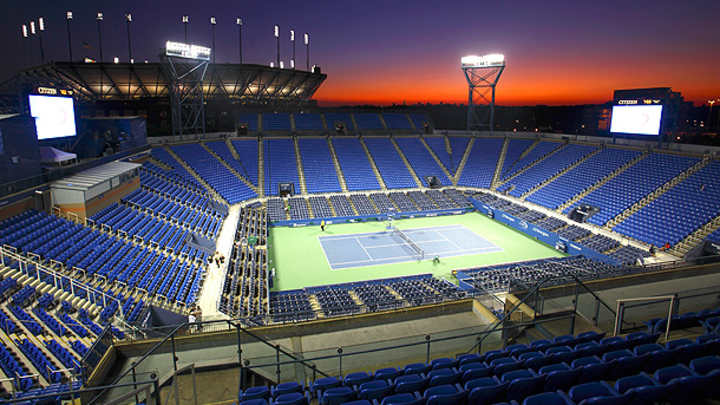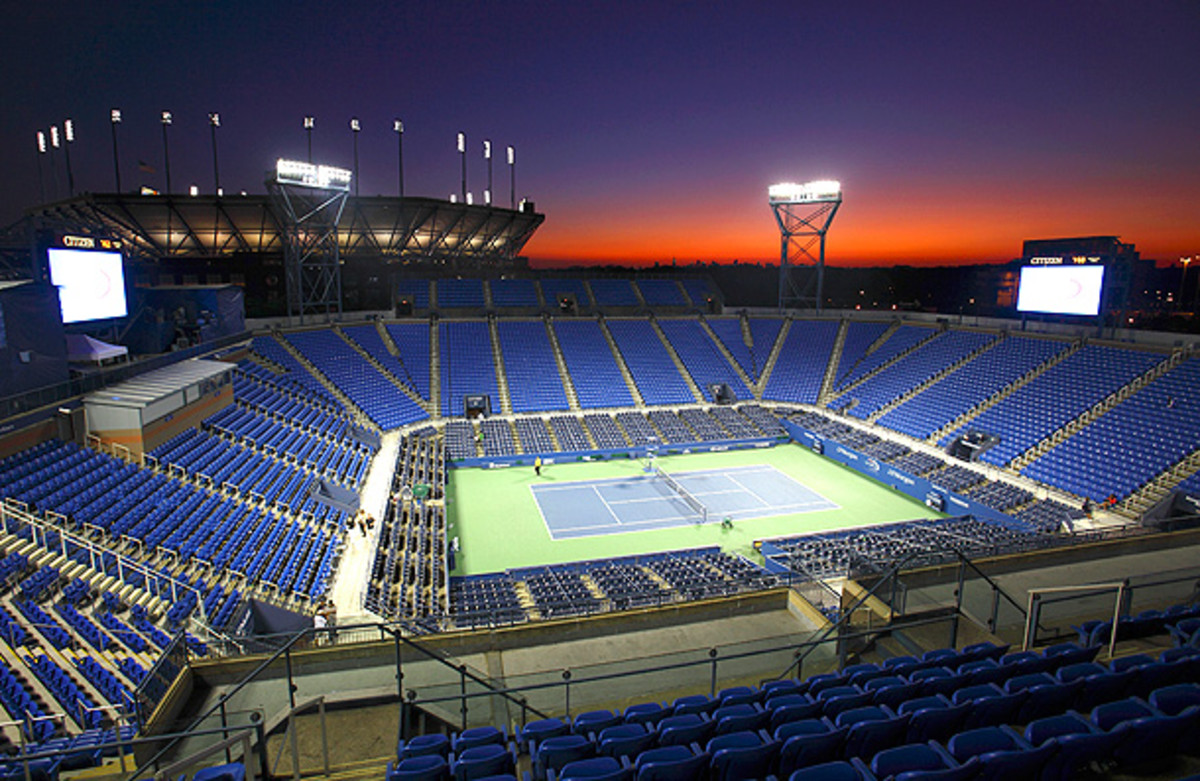U.S. Open will get $500 million in improvements, but no roof

USTA officials plan to increase the capacity of Louis Armstrong Stadium from 10,000 to 15,000, among other construction plans. However, putting a roof on Arthur Ashe Stadium is not in the works, due to its weak construction base. (Erick W. Rasco /Sports Illustrated/Getty Images)

If each Grand Slam tournament is supposed to adopt the underlying ethos of its cultural surroundings, the U.S. Open has clearly taken America's "bigger is better" motto and run with it.
As reported in The New York Times, the USTA plans to spend $500 million on expansion and improvements to the Billie Jean King National Tennis Center -- and no, those plans do not include the one obvious thing for which everyone has been clamoring: a roof. The USTA says it's been trying to find a roofing solution for Arthur Ashe Stadium that would finally put an end to four straight years of Monday men's finals, but the problem is built into the stadium itself. Or under the stadium, actually:.
U.S.T.A. officials said that Arthur Ashe Stadium, which was built on a swamp-like ash dump, could not physically absorb the weight of a roof that would cover its expanse.
You had me at "swamp-like ash dump," USTA.
So if $500 million can't buy Arthur Ashe a hat, what can it buy? Room for 7,000 more fans. That makes sense. Because when I've walked around the BJKNTC on those sweltering New York summer days, weaving through crowds and squeezing against other sweaty bodies to try to catch a glimpse of Serena Williams' forehand, you know what I'm always thinking? "Man, this would be so much better if there were even more people here."
Here's what $500 million will buy you these days, per The New York Times:
• Expansion of Louis Armstrong Court to accommodate 5,000 more fans, increasing the capacity from 10,000 to 15,000.
• Tearing down the Grandstand court that sits adjacent to Armstrong and rebuilding it on the southwest corner of the grounds. It will hold 8,000, a 2,000-seat increase.
• A new double-deck viewing area that will allow 800 fans to watch the five primary practice courts (currently fenced off and only viewable via a set of bleachers set on one side) and three outer courts.
• Moving seven courts on the south side 30 to 50 feet in order to build a walkway so people can actually, you know, get to the new Grandstand court.
The USTA hopes to begin construction in the fall of 2013 and says the new Grandstand could be ready by 2015, though improvements to Armstrong won't be finished before 2018. If the plans do go forward, I'll be interested to see how the increased capacity and placement affects both courts. The Grandstand has been the U.S Open's best court. Perfectly sized at 6,000 people, it offered a level of intimacy that regularly led to lively, engaged crowds that were the perfect catalyst for some of the most memorable matches at the U.S. Open. Granted, the Grand Canyon seems intimate compared to the 23,700-seat Arthur Ashe Stadium, once heralded the worst sports venue in America. But will a 33 percent increase in capacity ruin what was the U.S. Open's true gem? If so, which court will step up to become to new "cult court" of choice? The new Court 17, which made its debut last year, seems a good candidate.
While the organization says the $500 million investment is in response to the increased competition and pressure from the other Slams, at least the other three have invested in fixing their own glaring problems. Wimbledon built its state-of-the-art retractable roof to deal with the unpredictable British summer; Roland Garros is expanding the site to deal with congestion (and yes, a roof and lights are planned); and the Australian Open is adding a roof to Margaret Court Arena and continuing to expand in order to stand toe-to-toe with the big boys.
The tough reality for the USTA is that no amount of bells and whistles will distract anyone from the glaring absence of a roof. That's what the U.S. Open needs and that's not what it'll be getting anytime soon. So keep that second Monday in September open, tennis fans. If recent history tells us anything, we'll need it.
What do you think about about the USTA's planned improvements? Sound off in the comments.
